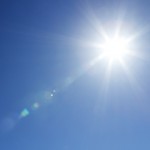About Argentina
Argentina lies in the very south of South America, stretching longwise across 5121km, it is the 8th largest country in the world.
With its capital of Buenos Aires being dubbed 'the Paris of the South,' the country is home to not only a variety of vibrant festivals and cultural activities but also a large array of weather conditions.
The country as a whole can really be divided up into four different regions, within which different climatic conditions are experiences. There are the agriculturally rich and fertile plains of the Pampas which lies in the north, central to the east part of the country.
To the west of here is the Northern Interior heading toward the west nearing Chile, which is made up of subtropical flat lands which increase in heat extremities as you move further south. In the central parts of the country, you will find the remained of the Pampas region and the plat plains which extend west and south of Buenos Aires. As a rule, rainfall decreases as you head west and temperatures increases, as you move south temperatures decrease as doe rainfall. Finally, in the very south of the country, you will find the Flat rolling plateau of the Patagonia region. Here the climate ranges from temperate in the north of the region, right down to subpolar in the very south.
NORTH and NORTHEASTERN
Parts of the north of the country are subtropical, with rainfall mainly in the summer months. For example, the capital city of Buenos Aires is home to a humid subtropical climate, with an average yearly temperature of 18°C and annual rainfall over 1000mm. Summer here can see highs of 30 degrees, while in winter in the coldest month of July the mercury can fall below freezing point. In this part of the country, you will often witness spectacular thunderstorms and it is also home to the largest hail in the world!

City of Buenos Aires glowing in the night.
See here for weather averages for Buenos Aires.
As a whole, the Northern Regions of Argentina host hot and humid summers and mild, but drier winters and the region can be subject to droughts. As you head further north and near the tropics, conditions become much more tropical. However, have you move westward toward Chile rainfall decreases and the interior of the country will feel much harsher weather and higher temperature. In northwestern Argentina, the temperatures are high year round, and this combined with the tropical humidity can often result in uncomfortable conditions.
CENTRAL
Like the rest of the country, the conditions in Central Argentina vary as you head west to east and north to south. Like any part of the world, the weather will vary with varying elevation, and as the Andes mountain range lies to the west this has a huge effect on the climate.
Most of Central Argentina is made up of the plains of Pampas which is the richest agriculture region. In this area, there is healthy rainfall mainly falling in the summer months, though droughts are not devoid in the winter months. As a whole, this region has a healthy pleasant climate as it lies well outside the tropics and is moderated by the east coastal influences.
If you compare the conditions for Buenos Aires in the east and Victoria in the west you can see the effects of moving from east to west.

Mount Fitz Roy and laguna Torre, Los Glaciares National Park, Patagonia, Argentina.
WEST / SOUTH
As you move toward the west you will near the great Andes mountain range which acts as a border between Chile and Argentina. It is the Andes range which is the reason why southern Argentina is relatively dry considering its elevation. The mountains act as a rain shadow and a barrier from westerly winds blowing from Chile. As a result, you witness dramatically different conditions on either side of the Andes. See sees wet and cloudy conditions for a lot of the year, whereas Argentina is comparatively drier and some parts particularly when much closer to the mountains are arid and desert-like.
In the south of the country, the weather becomes much cooler, while summers are still warm the winters are cold and can see heavy snowfall- especially in the mountains. In this region, the climate is continental with a large variation in temperatures not only across the year but also from day to night. In the very south-east, the land is flat and arid and can best be described as semi-desert.
WINDS IN ARGENTINA
The country is affected for 3 main prevailing winds which blow is different parts of the country.
The Zonda wind is a hot and dry wind which affects West- Central Argentina and is one of the more problematic winds as it can reach speeds over up to 120 km/h which can cause significant damage in parts. In addition to this is causes blizzards at high altitudes, and can cause wildfires in the low lands. This wind blows from about June through until November.
The Viento Norte is another warm wind, though not problematic like Argentinas other problematic warm wind. The Viento blows from the north and brings mild conditions to the winter time.
Finally, the Pampero wind is a cool wind that blows through the south of the country through the plains of Pampas and Patagonia.
Argentina has much to offer in terms of culture and sights as well as its enviable climate in parts. Across the entirety fo the country you can move from continental weather to temperate weather to tropical weather and even down to subpolar weather in the very south, so whatever conditions it is that tickles your fancy you will be sure to find it somewhere in Argentina.

Iguassu Falls, the largest series of waterfalls of the world, located at the Brazilian and Argentinian border.


















